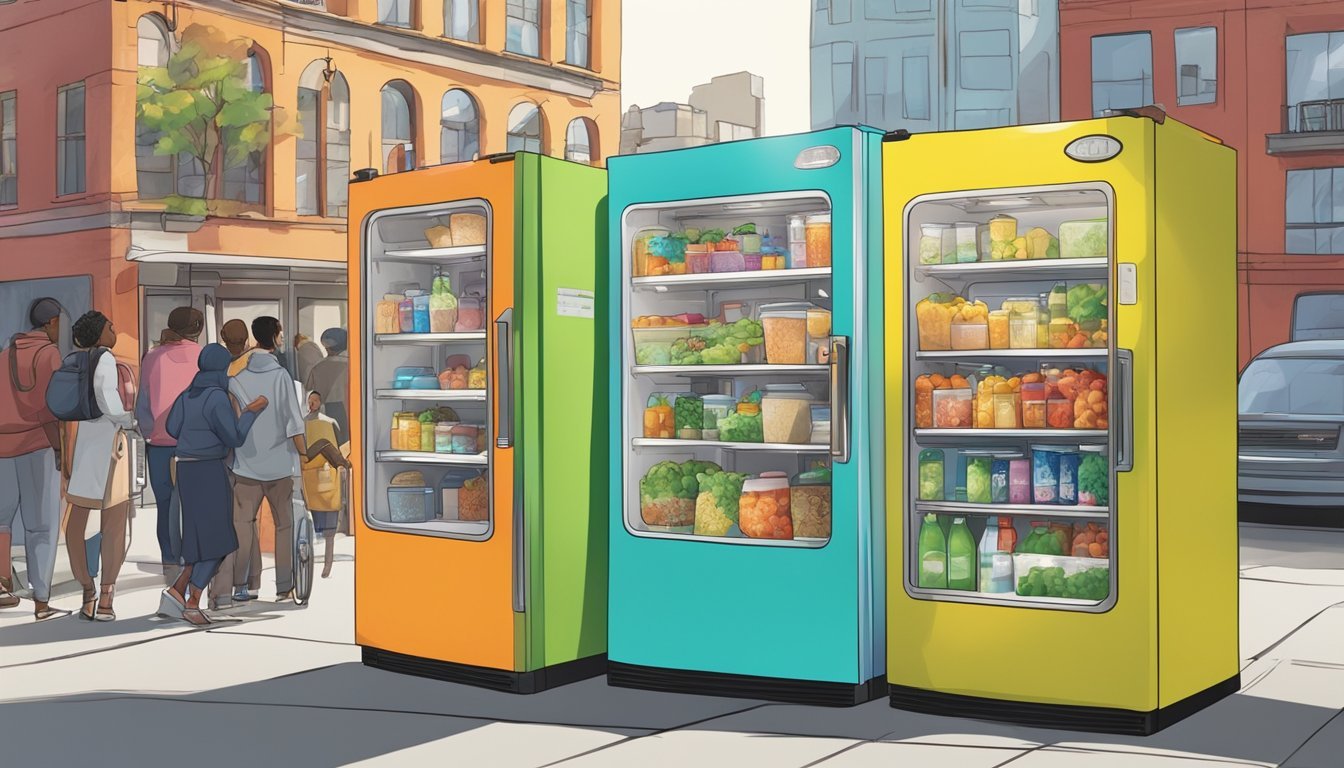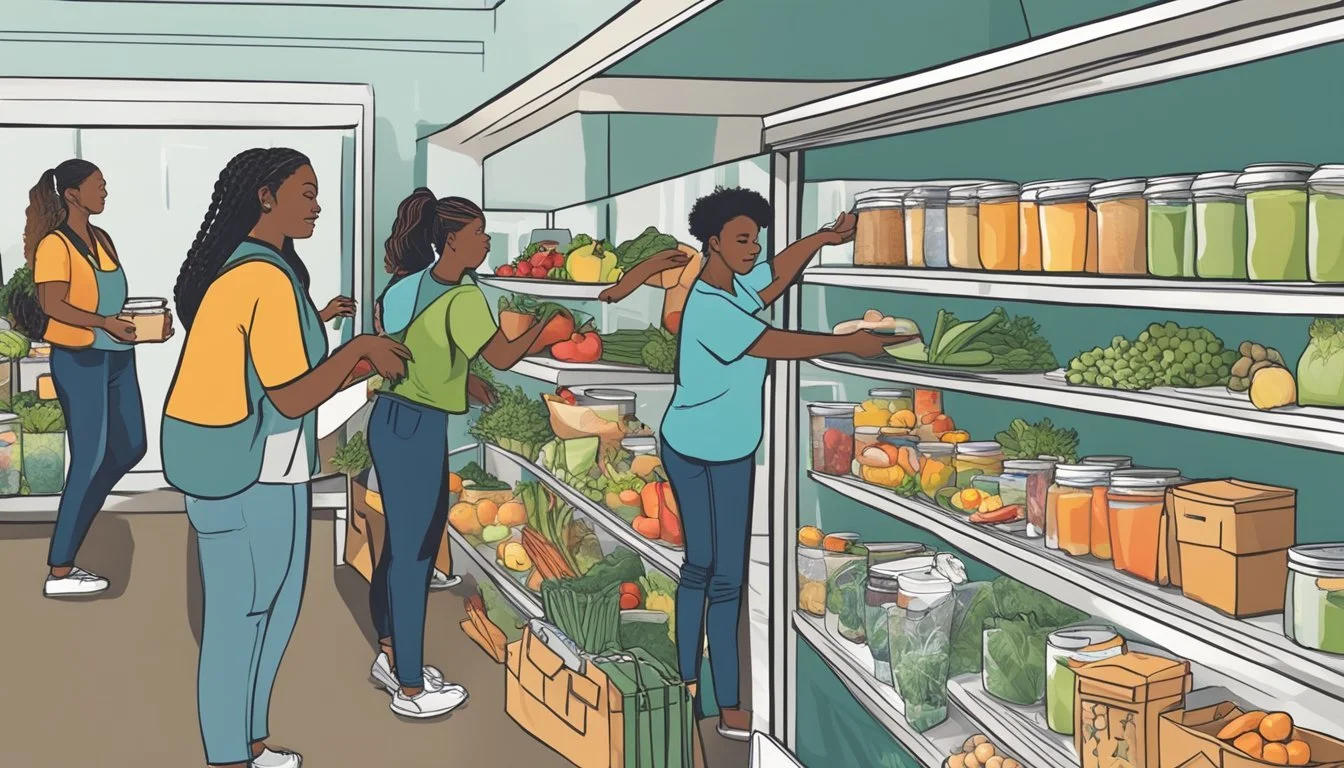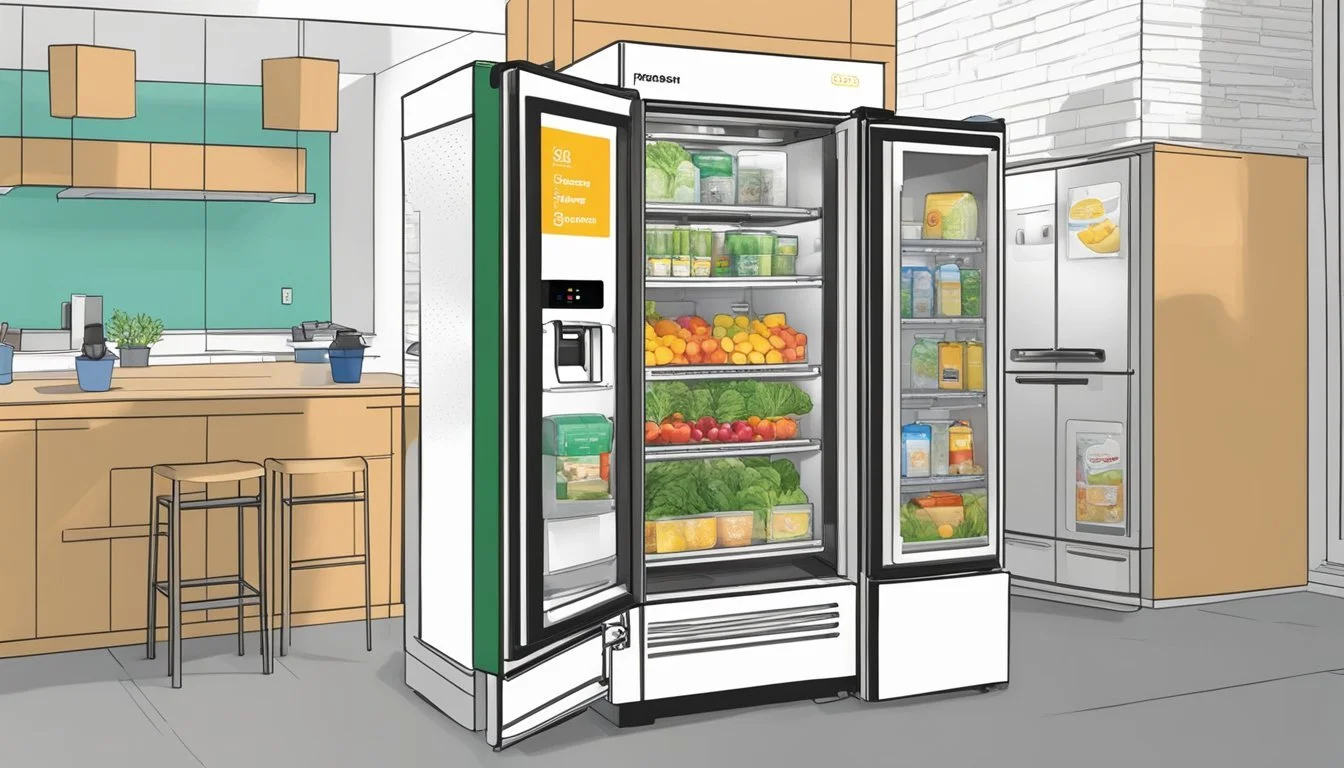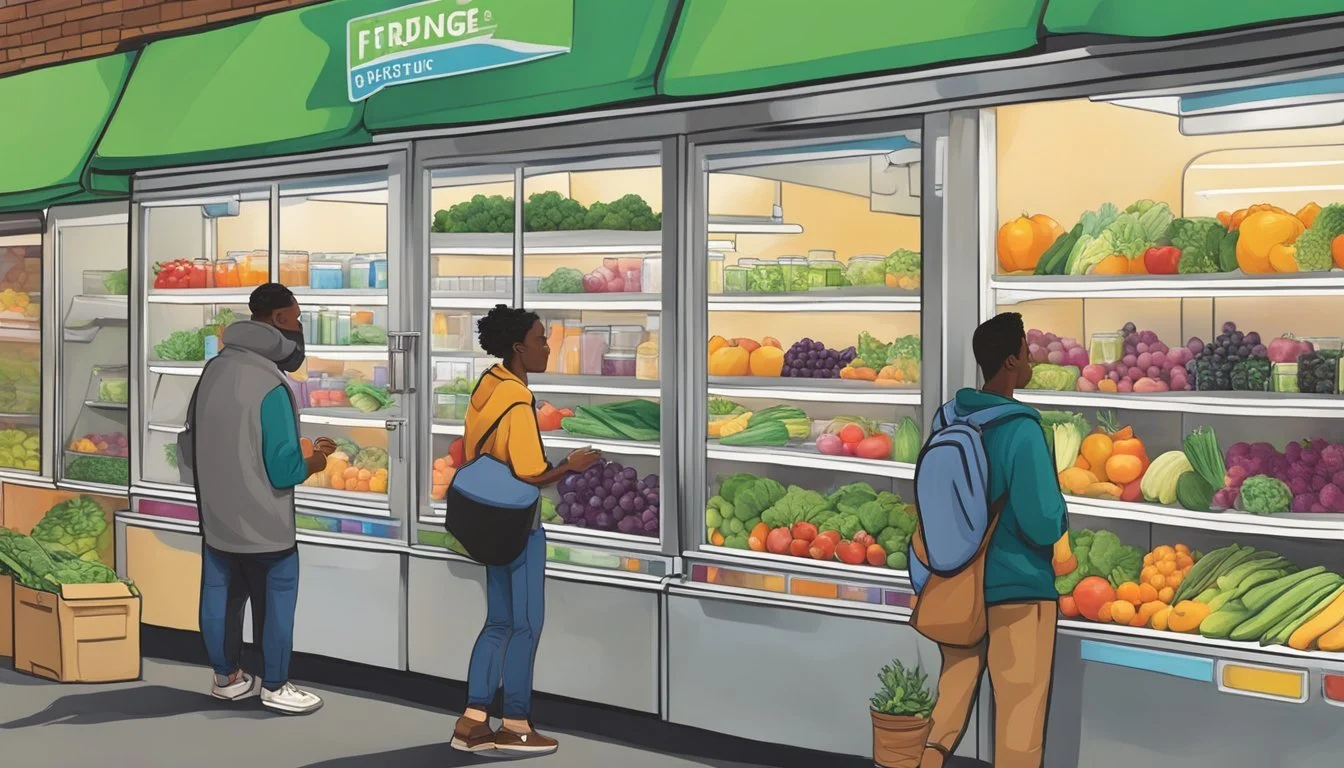Saint Paul, MN Community Fridge
Addressing Food Insecurity Locally
In Saint Paul, Minnesota, a commendable initiative is addressing food insecurity and waste through the establishment of community fridges. This local movement, part of a larger trend spanning across various cities, allows residents to share surplus food and provides those in need with free access to fresh, nutritious provisions. By placing refrigerators in accessible locations, Saint Paul joins a network of cities promoting food sharing to combat hunger and reduce waste.
The emergence of community fridges in Saint Paul not only fosters a spirit of sharing and caring but also propagates environmental sustainability. Each fridge operates on the principles of take what you need and leave what you can, ensuring that good food that might otherwise go to waste is utilized. The initiative encourages participation from all members of the community, including local businesses, farmers, and individuals, who collectively contribute to a more resilient and food-secure city.
Saint Paul's approach embodies a practical response to contemporary challenges faced by urban communities. By leveraging the power of collective action, these community fridges act as a bridge between abundance and need, demonstrating how local solutions can make a significant impact on broader societal issues.
Origin and Purpose of Saint Paul Community Fridges
In Saint Paul, Minnesota, community fridges serve as an innovative approach to combat food insecurity among its residents. The foundational idea behind the fridges is cooperation; they operate on a simple ethos: Take what you need, leave what you can.
Initiation: The first of these fridges made its mark in the neighborhoods of Saint Paul with a central goal in mind: to provide easier access to free food and reduce waste. A response to the urgent needs of Saint Paul residents, it's a reflection of Minnesota’s broader spirit of community support.
Core Objectives:
Support to Residents: They offer direct and immediate relief to individuals and families by supplying a variety of fresh produce and other food items.
Food Waste Reduction: By allowing the redistribution of excess or unused food, they combat the issue of wastage actively.
Community Involvement: These fridges encourage local engagement; Ramsey County citizens participate in stocking and maintaining them.
Operational Model:
Accessibility: Placed strategically across the city, the fridges are accessible 24/7, ensuring no Saint Paul resident is left without aid regardless of the time of day.
Partnerships: The project thrives on partnerships with local organizations, food banks, and individual contributors, creating a cohesive network for food supply maintenance.
The impact of community fridges in Saint Paul is significant; they have become an integral part of the city’s strategy to alleviate hunger among its diverse population, while fostering a sense of community and shared responsibility across Ramsey County.
Location and Accessibility
The St. Paul Community Fridges program, situated in the heart of Ramsey County, provides an invaluable resource to Saint Paul residents. The program focuses on encouraging food sharing and reducing waste by establishing community fridges throughout the region.
For Residents' Use:
Community fridges are strategically located for ease of access.
They serve as community hubs for food sharing.
Locations and Transport:
Easily reached by public transportation, bicycle, or on foot, enhancing community ties.
Details about specific fridge locations can be navigated through local directories or the program's online platforms.
ADA Accommodation:
Addresses the requirements of individuals with disabilities.
Ensures that all community members, including those needing wheelchair access, can benefit from the fridges’ services.
Operating Hours:
Typically, community fridges are operational and freely accessible to the public on a 24/7 basis.
Guidelines for usage times might vary and should be checked for each particular location.
Community Engagement:
Supported by engaged volunteers who monitor and maintain the fridges to keep them clean and stocked.
Offers a collective effort toward food insecurity solutions and minimizes food wastage.
By providing these communal resources, Saint Paul not only supports its residents in need but also fosters a spirit of communal support and environmental responsibility.
How Community Fridges Work
Community fridges, essentially public refrigerators, are a novel approach to address food insecurity and reduce waste. Managed by community members or organizations, these fridges operate on the principle of take what you need, leave what you can. In a city like Saint Paul, MN, the concept thrives on communal collaboration and trust.
The working of a community fridge involves several key steps:
Location Selection: A visible and accessible area is chosen, ensuring easy reach for everyone, including those with disabilities.
Procurement of Appliances: A reliable refrigerator, conforming to food safety standards, is installed. It's important that the equipment is energy-efficient and capable of withstanding outdoor settings if not placed indoors.
Maintenance: Regular cleaning and monitoring are conducted to ensure the freshness and safety of food. Volunteers usually manage these tasks, while some fridges may have specific organizations overseeing operations.
Stocking the Fridge: Community members and businesses donate food. Typical items include:
Perishable goods like fruits, vegetables, and bread
Non-perishable items like canned foods or dry pasta
Occasionally, prepared meals in compliance with local health regulations
Usage: Individuals facing food scarcity utilize the fridge anonymously, free of any stigma. Donors and users are expected to follow posted guidelines regarding what can be contributed and taken.
The model relies on good faith, with no formal check-out process. Signs or infographics sometimes assist in educating users about proper usage. The sustainability of a community fridge hinges on continual community engagement, responsible use, and diligent restocking.
Installation and Maintenance
When installing and maintaining a community fridge in Saint Paul, MN, it's crucial to have knowledgeable services handling both the placement and the ongoing care. Proper installation ensures safe and efficient operation, while regular maintenance is key to the fridge's longevity and food safety.
Setting Up a Community Fridge
To successfully set up a community fridge, one must engage services that are skilled in the proper installation of appliances. They should:
Identify an accessible location: The spot should be easily reachable by all community members.
Ensure a power source: A stable and dedicated electrical supply is necessary to keep the fridge running.
Install with safety in mind: The chosen service should install the fridge away from water sources to prevent electrical hazards.
Ongoing Maintenance
Regular maintenance is essential for the community fridge to remain a reliable resource. Maintenance services often include:
Regular cleaning: Both the interior and exterior should be cleaned to ensure hygiene standards.
Temperature checks: To prevent food spoilage, the fridge must consistently operate at safe temperatures.
Prompt repairs: Any sign of malfunction should be addressed immediately by professionals to avoid food waste and ensure safety.
Inventory Management
The Saint Paul, MN Community Fridge employs a dedicated approach to inventory management to ensure that services provided are both effective and efficient. This system plays a pivotal role in the distribution of products, reduction of waste, and contributes to recycling efforts within the community.
Tracking and Monitoring: Inventory is meticulously monitored, utilizing a system designed for easy access and clear visibility of all available items. Personnel in charge of management perform regular checks, documenting the status of perishable goods and non-perishables alike.
Perishables: Fresh produce and other perishable items are tracked for freshness, with expiration dates carefully observed to reduce waste and maintain food safety standards.
Non-Perishables: Canned goods and similar products are organized and rotated appropriately to maximize shelf-life and availability.
Partnerships and Contributions: Local businesses and residents are encouraged to contribute, creating a diverse supply of food and essential goods. Through this collaborative effort, stagnation of items is avoided and a constant flow of inventory is upheld.
Waste Reduction Initiatives: Excess foods or items nearing their expiration are promptly identified, and swift actions are taken to redistribute them effectively, minimizing waste:
Donations to food banks,
Special discount events,
Composting of non-edible items.
Community Involvement: Individuals in the community receive instructions on how to effectively contribute to the system, fostering a collective responsibility for waste reduction and recycling. Clear signage and informational guidelines ensure contributors understand the importance of their role in inventory management.
Health and Safety Standards
Community fridges serve as a crucial resource for residents, but it’s vital to maintain rigorous health and safety standards to ensure the well-being of everyone involved. The city of Saint Paul mandates compliance with specific protocols, enforced by various departments to maintain public safety.
Permitting and Inspections Any refrigeration equipment used by community fridges in Saint Paul must be installed with proper permits. The Mechanical Inspection Department oversees the installation process, ensuring adherence to safety codes. Inspectors verify that:
Refrigerators operate at safe temperatures.
Equipment is securely installed and well-maintained.
Required Licensing Entities responsible for managing community fridges should possess necessary licenses. These licenses show compliance with health guidelines and signify that:
Staff is trained in food safety.
The fridge stocks permissible and non-expired items.
Food Safety Regulations The Minnesota Department of Health sets food safety regulations, applicable to community fridges. They stipulate that:
Food must be stored at correct temperatures to prevent spoilage.
Pre-packaged and labeled food must include ingredients and expiration dates.
Open or homemade items are typically not allowed to minimize health risks.
Infrastructure Standards Structural integrity is paramount. Windows in the facility housing the community fridge must be in good condition, lockable, and operable to ensure the security and proper ventilation of the area.
By adhering to these standards, community fridges in Saint Paul ensure they are safe, hygienic, and reliable resources. Licensed services not only show due diligence but also foster trust within the community that health and safety are top priorities.
Community Engagement and Volunteering
Saint Paul, known for its strong sense of community, has numerous initiatives demonstrating residents' commitment to service and engagement. One significant area of focus is the Community Fridge initiative, which relies on robust volunteer support and community involvement.
Volunteer Participation: The success of the Community Fridge in Saint Paul hinges on the dedication of its volunteers. Residents participate actively, offering their time to stock and maintain the fridges. This ensures a consistent supply of fresh food for community members in need.
Engaging Services: How a community serves its members plays a crucial role in its wellbeing. Through initiatives like the Community Fridge, customer service takes on new meaning as residents provide direct assistance, ensuring those who use the fridge receive great service.
Community Contributions:
Food donations from local residents and businesses
Fridge cleaning and maintenance by community volunteers
Regular checks to uphold health and safety standards
List of Services Provided by Volunteers:
Stocking fridges with perishable and non-perishable items
General cleaning of the fridge and surrounding area
Monitoring food quality and safety
Providing information and guidance to users
In conclusion, engagement in Saint Paul bridges the gap between offering and receiving help, creating a chain of support underscored by excellent service and a caring community spirit. It not only fosters a sense of shared responsibility but also establishes a welcoming environment for all residents to both give and receive compassionately.
Support and Donations
The Saint Paul Community Fridges initiative thrives on the generosity and engagement of its residents. Support comes in various forms, including in-kind donations, volunteering, and monetary contributions, all of which are pivotal in maintaining and stocking the community fridges.
In-Kind Donations Residents are encouraged to donate healthy and nutritious food items. Suggested donations include:
Fresh fruits and vegetables
Unopened, non-perishable goods
Sealed, prepared meals
Donors should ensure that the items are within the use-by dates and in good condition. Inedible items are discouraged as they pose health risks and create waste.
Volunteering Individuals and groups can support by volunteering their time to manage the fridges. Tasks may involve:
Cleaning and sanitizing the fridge areas
Sorting and organizing food donations
Monitoring the fridges for expired or inappropriate items
Monetary Contributions Monetary donations are crucial for sustenance. They aid in:
Purchasing food supplies, especially in shortages
Maintenance and operation costs
Expansion to serve more communities
Interested parties can donate through official channels associated with Saint Paul Community Services or by participating in the MN FoodShare Month initiative, which focuses on filling local food shelves.
The engagement of community members, combined with structured programs from organizations like Keystone Community Services, ensures that the Saint Paul Community Fridges can continue to provide accessible, free food for those in need.
Contact and Communication
Community fridges in Saint Paul, MN, offer free food for people in need and rely on clear communication channels to operate efficiently. To inquire about locations, food donations, or to start a community fridge, interested parties should contact local organizations directly.
Individuals seeking information or wishing to contribute can refer to the below essential points of contact:
Website Inquiries: Most community fridge initiatives maintain websites or social media pages. For instance, visitors can search NYC Fridge for information relevant to New York, and similar online resources may exist for Saint Paul.
Email Correspondence: Email is a primary method for formal communication and inquiries. Email addresses are often listed on the associated websites or social media pages.
Social Media Connections: Utilizing social media platforms such as Facebook or Twitter can be an effective way to receive updates and engage with community fridge coordinators.
Local Community Boards: Information about community fridges may also be posted on local community boards within Saint Paul, offering another method to get informed.
For those wishing to volunteer or donate, it's typically recommended to reach out through the provided contact methods to coordinate contributions effectively.
Here is a simplified contact list for ease of reference:
Method Description Website Check for an official website or a social media page. Email Look for contact emails on official pages. Social Media Follow for updates and direct messaging capabilities. Community Boards Visit local boards for postings about the community fridge.
Communication is not only crucial for logistical coordination but also for fostering a supportive network that enhances the sustainability of the community fridge movement in Saint Paul.
Leveraging Technology for Efficiency
In Saint Paul, MN, the Community Fridge initiative is harnessing cutting-edge technology to bolster efficiency across various sectors. By incorporating innovative services, equipment, and lighting fixtures, the initiative strives to minimize waste and streamline operations.
Services: Advanced software tools are implemented to track inventory and monitor the freshness of food items, ensuring the community fridge remains well-stocked with safe and healthy options. The service platforms also facilitate connectivity with volunteers, who can easily sign up for restocking and maintenance duties.
Equipment: The refrigerators themselves are state-of-the-art, boasting energy-efficient designs that keep operating costs low. They come equipped with smart sensors that can alert administrators to temperature fluctuations or technical malfunctions, allowing for swift intervention.
Lighting Fixtures: The fridges are housed in spaces illuminated by LED lighting, which is not only environmentally friendly but also cost-effective. These high-efficiency fixtures provide clear, bright light and have longer lifespans than traditional bulbs, which plays a crucial role in maintaining the visibility and safety of the food distribution areas.
In concert, these technological enhancements not only improve the infrastructure of the community fridges but also foster a safer, more equitable distribution of food resources. Saint Paul's application of such technology serves as a testament to its commitment to community well-being and sustainability.
Legal and Regulatory Compliance
In Saint Paul, MN, the implementation of community fridges must adhere to relevant health and safety regulations. Saint Paul's Safety and Inspections department oversees these compliance standards to ensure public safety.
Entities interested in setting up a community fridge should be aware that refrigeration equipment, including community fridges, require a permit for installation. The equipment must meet city codes and safety standards. Failing to obtain the necessary permits may result in legal repercussions.
Licensed professionals should conduct the installation and maintenance of these refrigeration units to ensure they operate safely and efficiently. The Saint Paul city government may require inspections to verify the installation meets the building codes and health regulations.
Additionally, the management of community fridges must consider the following regulatory aspects:
Food Safety: Community fridges should follow Minnesota's food safety guidelines, which include, but are not limited to, proper food handling and storage.
Waste Management: Legally, the disposal of non-functional refrigeration equipment must align with the city’s environmental guidelines, which often involve recycling protocols.
For specific guidelines and to ensure full compliance, the Department of Safety and Inspections (DSI) should be contacted directly:
General Information Phone: 651-266-8989
Address: 375 Jackson Street, Suite 220, Saint Paul, MN 55101
Hours: 7:30 am - 4:30 pm, Monday to Friday
It's imperative that any community fridge in Saint Paul complies with all local laws and regulations to serve the community effectively and legally.
Testimonials and Community Impact
The Saint Paul, MN Community Fridge initiative has been met with positive feedback from various quarters of the community. Residents frequently mention the accessible location and the reliability of the service, underscoring the project's successful integration into the local fabric.
Ease of Access: Residents appreciate the fact that these fridges are easily accessible throughout the community, offering fresh food to those in need.
Reduction in Waste: The initiative also contributes to less food waste, a concern shared by many eco-conscious members of the community.
Individual stories further highlight the initiative's impact:
Tom, a frequent volunteer, notes the increased sense of community: "You really see the best in people here, both in those giving and those receiving."
Reviews from individuals who have used the service regularly speak to the great service provided: "Life-changing. The community fridge helped my family through a tough month," says a local mother of three.
The consistent support and expansion of the community fridge network reflect a growing recognition of its value. Its contribution to food security and support of local residents, particularly those facing financial challenges, is a testament to its effectiveness in fostering solidarity and providing practical assistance. The program has become an essential resource, affirming its organizers' dedication and the community's commitment to collective well-being.
Related Services in Saint Paul
In Saint Paul, MN, residents have access to a comprehensive range of services designed to maintain and enhance their living environments. From expert plumbing and electrical maintenance to efficient waste management and appliance services, the city is well-equipped to support its community's infrastructure needs.
Plumbing and Electrical Services
Saint Paul boasts a variety of plumbing and electrical service providers. They offer a range of services including:
Installation and repair of water heaters
Maintenance of lighting fixtures and electrical systems
Plumbers and electricians in Saint Paul are known for their professionalism and adherence to safety standards, ensuring that all services are performed efficiently and effectively.
Waste Removal and Recycling
Handling waste and promoting recycling is a priority in Saint Paul. The services include:
Regular waste removal schedules
Recycling programs for sustainable waste management
Local waste management services are dedicated to minimizing environmental impact and keeping the neighborhoods clean and healthy.
Appliance Delivery and Setup
Saint Paul residents can take advantage of:
Delivery and safe installation of appliances
Professional setup, including connecting appliances to existing plumbing and electrical systems
Retailers and service companies provide reliable and timely appliance delivery and installation, ensuring that new appliances are up and running with little hassle.
Future Perspectives and Sustainability
As Saint Paul, Minnesota continues its journey towards sustainability, community fridge initiatives present a promising path forward. These fridges address two key issues simultaneously: food insecurity and food waste, both of which have significant environmental impacts.
Key Sustainability Goals:
Reduction of Food Waste: By offering a place for surplus food, community fridges ensure that edible food is consumed rather than thrown away.
Decrease in Carbon Emissions: Less food waste translates into fewer greenhouse gases, as decomposing food in landfills generates methane, a potent greenhouse gas.
The city aims to espouse the principles of a circular economy, where products and materials are reused and recycled, to create a more sustainable community. Through collaboration and strong governance, the community fridges are set to become a staple of this.
Approaches for Future Development:
Community Engagement: Increasing awareness and participation through education and outreach.
Partnerships: Teaming up with local businesses, NGOs, and policymakers to expand food donations and support.
Innovation: Utilizing technology for better food monitoring and sharing, like apps to track fridge contents.
Environmental Impact:
Resource Efficiency: Community fridges help ensure food produced is utilized fully, reducing the environmental burden of production.
Sustainable Practices: The fridges encourage residents to think sustainability in their daily choices.
The path ahead for Saint Paul is clear. By integrating community fridge programs into the broader Climate Action & Resilience Plan, the city looks to fortify its food systems, making them more resilient against waste and supportive of the environment.
















